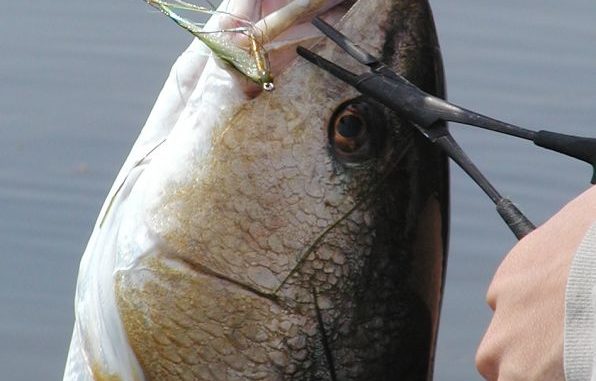
Early summer reds love weedy ponds
No greater example of coastal erosion can be found than the Lake Laurier area north of Highway 1 between Fourchon and Grand Isle.
Thirty years ago, I began fishing this area from a canoe. The marsh west of the lake was a labyrinth of ponds, trenasses and small bayous. Year round, the waters of West Laurier were infested with grass — and redfish.
I tell folks who outside of Venice that there was no better spot for fly-fishing redfish in Louisiana — or anywhere else on planet Earth. We averaged 20 to 30 reds on the fly per trip. Anything less than 10 was a bad day.
Unfortunately, my beloved marsh was slowly eaten away by erosion over the next two decades until it became nothing but a small group of islands.
Hurricanes Katrina and Gustav put the final nails in the coffin. West Laurier today is nothing but a large, shallow lake.
Fortunately, there are numerous other locations with grassy ponds where the poisson rouge lie in wait. Perhaps not in numbers that rival the glory days of West Laurier, but enough to put lots of bend in your fly rod.
The best locations will be in the upper estuaries where fresh water meets salt water. These brackish environments are home to a variety of submergent grasses, including Eurasian milfoil, widgeon grass and wild celery.
Most of my fly-fishing buddies agree that widgeon is the best grass. It also has a higher salinity tolerance, surviving in water up to 15 parts per thousand salt.
Aquatic grass represents complex structure. In other words, it can support higher numbers of micro and macro invertebrates, as well as forage species.
More feed equals more predators.
But grass serves the fly-caster well in other ways.
First, it filters sediments. And, as Cormier’s Third Law of Fly-fishing states: “Clear water favors the fly angler.”
Second, the weight of conventional lures can spook fish (with the splash of the lure) or pull up wad after wad of grass. But in fly-casting, a slightly weighted line delivers a near-weightless lure (the fly), so the line and fly hit the water with little disturbance.
Fly-fishermen looking for greener pastures — or in this case, ponds — have many options, with Delacroix, Galliano, Lafitte and Myrtle Grove being among the best.
Add the waters adjacent to Houma to that list.
Living in Central Louisiana these days, Houma is a closer destination for me than the others mentioned.
The ponds around Dulac, Montegut, Boudreaux and Pointe-aux-Chenes have more than enough grass — and Spottail Elvises — to keep me very happy.
A couple of years ago, TigerJake and I made a trip to Montegut in our canoe. Our destination was a small cluster of ponds that he and one of his LSU classmates had discovered.
As we approached the first pond, I spotted numerous backs and tails both within the area of vegetation and all along the perimeter.
Jake’s advice was to target the fish farthest from the area so as to not spook the rest.
There are four flies I use in these situations: poppers, bendbacks, deer hair crabs and spoonflies. All have no added weight and, except for poppers, have inverted hooks (i.e., hook point up) to prevent snags.
On my 7-weight rod, I had tied a gold Coma Spoon to my 14-pound leader, so I went with that first.
On the cast, the fly fell on the red’s tail. We saw a swirl and figured it to be spooked. But when I stripped back in for the false cast, I felt a tug and set the hook.
It turned out to be a small slot red.
The good news was we had one in the box for dinner. The bad news was that all the backs and tails we had seen had disappeared.
This is not uncommon. A grass pond is a very sensitive environment. Any kind of “shock wave” will put fish down.
Don’t get rattled — the fish are still there. It takes a great deal of patience, but more can be caught.
Occasionally we’d spot a back rising from the interior of the grass. This required changing to a bendback style fly. My favorite is the “Prince of Tides,” which has a body of gold tinsel wrap.
Skirting the fly over the grass can result in explosions when the reds come up and snatch the fly.
Setting the hook isn’t a problem; getting an 8-pound fish out of 10 pounds of wet grass is.
The next pond revealed tails again, but these had a darker color. It meant only one thing: sheepshead.
Getting “goats” to eat flies isn’t as difficult as many believe. It does require lots of patience. Tease and tease again, with a VERY slow retrieve of the fly.
Another species the grass attracts is black drum. Like goats, it takes a great deal of patience, but black drum do eat flies.
Whatever species you target in grassy ponds, do it before the water temperatures get too hot and the bigger fish head to deeper, cooler waters.


